
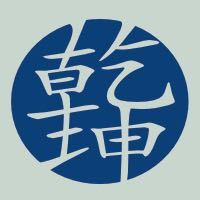
 新店入驻
新店入驻
商品二维码

扫码购买及分享
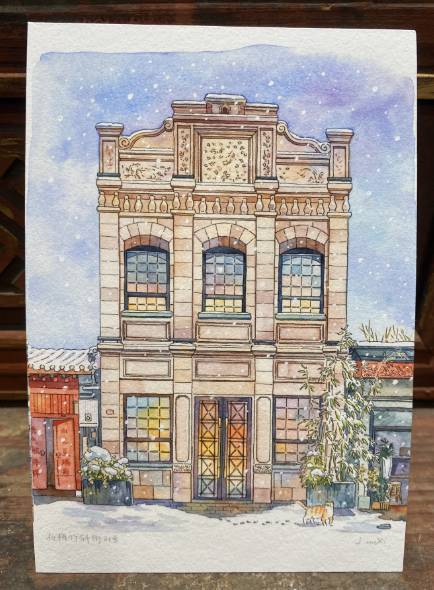
明信片——(原)模范书局(胡同系列)
价格 : ¥ 15
邮费 : ¥13.00 满 ¥300 包邮
数量 : -1+ 库存 : 20

明信片——(原)模范书局(胡同系列)
¥ 15.00
邮费: ¥13.00 满 ¥300 包邮
浏览 : 270
商品详情
商品评价
胡同系列作品,作者:罗西
十一长假刚刚结束,我与乾坤空间的张老师一同走访了杨梅竹斜街,并计划为哪些建筑绘制肖像。在挑选画像对象时,我们决定避免选择那些过于年轻的商店。首先,因为斜街上的店家常常更替;其次,虽然它们能够带来瞬时的流量,却难以成为长久的记忆。我们想要选择那些具有一定历史和人文意义的建筑物,无论杨梅竹斜街的业态如何发展,它们都将成为人们对这条街道的记忆锚点。最终,我们在这条斜街上选定了六个建筑,它们与青云阁、世界书局以及乾坤空间一同构成了一幅完整的斜街画卷。
The National Day holiday has just ended, and together with Mr. Zhang from Qiankun Space, we visited Yangmeizhu Xiejie, planning to sketch portraits of selected buildings. In choosing subjects, we intentionally avoided opting for relatively young businesses. Firstly, due to the frequent turnover of shops along the sloping street, and secondly, although they might bring transient traffic, they are unlikely to leave a lasting memory. We aimed to select buildings with a certain historical and cultural significance, ones that would become anchors of memory for people, regardless of how the business landscape of Yangmeizhu Xiejie evolves. Ultimately, we settled on six buildings, creating a complete picture of the sloping street alongside Qingyunge, the World Bookstore, and Qiankun Space.
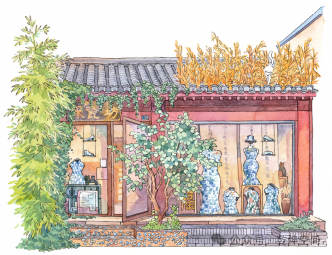
采瓷坊 杨梅竹斜街35号
Cai Ci Fang, No.35 Yamgmeizhu Xiejie
位于杨梅竹斜街35号的采瓷坊在早年曾经是交通旅馆,如今是一家专注用古瓷片设计首饰和其他艺术品的小店。沿着街道的两扇大落地窗里陈列着几尊由古瓷片拼成的青花瓷旗袍。据说,这些旗袍是从4000块青花瓷碎片中精选出1000块大小比例相近的碎片拼凑而成,十分别致,每次都吸引大批路人驻足观赏。大门的台阶同样引人注目,与精致的瓷旗袍不同,踏步上镶嵌着大小不一的瓷片,犹如艺术家的即兴创作,呈现出趣味十足的马赛克拼图。年迈的老房顶上长满了草,门口的竹子茂盛异常,使采瓷坊宛如被植物包围的温馨瓷房。在这里,来自遥远朝代的破碎青花瓷片焕发第二次青春,被重新加工成手镯、项链、戒指等现代首饰,重新融入人们的生活,采瓷坊早已成为斜街的象征之一。
Located at 35 Yangmeizhu Xiejie, Cai Ci Fang, formerly a transportation inn in its early years, has transformed into a small store specializing in designing jewelry and other art pieces using antique porcelain shards. Displayed in the two large French windows along the street are several cheongsam dresses made from pieces of antique blue-and-white porcelain. These cheongsam are said to be meticulously crafted from a selection of 1,000 pieces, carefully chosen from a pool of 4,000 shattered blue-and-white porcelain pieces, creating a unique and captivating sight that attracts numerous passersby. The steps at the entrance also draw attention, adorned with porcelain pieces of various sizes, resembling an artist's spontaneous mosaic creation—a playful and intriguing puzzle. The aged rooftop covered in grass and the flourishing bamboo at the doorway create a warm atmosphere, turning Cai Ci Fang into a charming porcelain haven embraced by nature. Here, the fragmented blue-and-white porcelain shards from distant dynasties find a second youth, reassembled into modern accessories like bracelets, necklaces, and rings, seamlessly reintegrating into people's lives. Cai Ci Fang has long become a symbol of Yangmeizhu Xiejie.
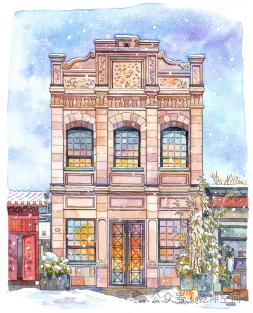
杨梅竹斜街31号
No.31 Yamgmeizhu Xiejie
采瓷坊的不远处,位于杨梅竹斜街31号的高大建筑曾经是网络文青群体中备受瞩目的模范书局,尽管如今书店已经撤离,但这座西洋建筑仍然吸引着众多摄影爱好者。这是一座三段式建筑,一二层的使用空间高耸,门窗比例瘦长,而第三层则以装饰为主,明显受到西方巴洛克风格的影响。中间高、两边低的屋顶形态由波浪型的曲线构件自然过渡,方形的山花和柱子上雕刻着花卉植物的卷曲纹样。我尝试还原这座建筑的真实比例,尽管你可能感觉它与实际有些出入,这是由于胡同狭小空间中产生的视觉偏差。我为这幅建筑肖像选择了一个下雪的背景,在寒冷的雪夜里,窗户微微透出光亮,虽然我们无法预知31号的未来,但是我对此充满期待。
Not far from Cai Ci Fang, at 31 Yangmeizhu Xiejie, stands a tall building that once housed the prominent Mofan Bookstore, garnering attention from the literary and artistic community. Despite the departure of the bookstore, this Western-style structure continues to attract numerous photography enthusiasts. The three-story building features a towering space on the first and second floors, with slender proportions of doors and windows. The third floor is adorned, showing clear influences of Western Baroque style. The roof, with a central peak and lower sides, transitions naturally with wavy curved elements. Carved floral and plant motifs embellish the square-shaped pediments and columns. I attempted to recreate the authentic proportions of this building, although you may feel a slight discrepancy due to the visual distortion within the narrow alley space. For the portrait of this building, I chose a snowy background, aiming to illuminate the interior on a cold winter night. While we cannot predict the future of Number 31, I approach it with anticipation.
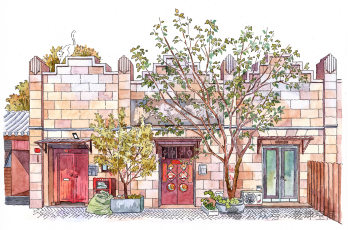
新儿童书店
No.51 Yamgmeizhu Xiejie
一直往西走,位于杨梅竹斜街51号的建筑曾是这条街上众多书店之一。在民国时期,它是一家印刷厂和文具厂,解放后转变为新儿童书店。这是一座相当长的建筑,不同于常见的灰瓦红墙,它宛如一堵城墙般伸展。由于其独特的比例和我的画幅限制,我只捕捉了建筑西侧曾经是书店部分的景象。沿街有五个门洞,“新儿童书店”的旧招牌悬挂在左起第二个门洞上,然而字迹早已斑驳模糊,又被门前的大树遮挡,只有在冬天才能勉强看到。进门处还可以发现墙上贴着一些做太极姿势的小人,可能是用来倡导全民健身。这些是2015年北京设计周遗留下的痕迹,当时杨梅竹斜街正是设计周的主要区域之一。我至今保留着一份当时的小册子,现在拿出来与大家一同回顾。
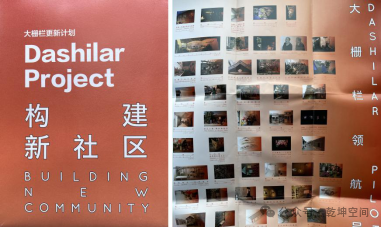
2015北京设计周宣传册
Brochure from Beijing Design Week, 2015
Continuing westward, at 51 Yangmeizhu Xiejie, is a building that was once among the many bookstores on this street. In the the period of the Republic of China, it operated as a printing and stationery factory and later transformed into the New Children's Bookstore after the War of Liberation. Unlike the common gray-tiled red-walled structures, this building extends like a city wall. Due to its unique proportions and the limitations of my canvas, I captured only the western side, which used to house the bookstore. Along the street, there are five doorways, with the old sign of the "New Children's Bookstore" hanging on the second doorway from the left. However, the inscription has faded over time and is obscured by a large tree in front, making it barely visible only in winter. Upon entering, one can still find on the wall some figures performing Tai Chi poses, possibly promoting overall fitness. These traces are remnants from the 2015 Beijing Design Week, during which Yangmeizhu Xiejie was a prominent area. I still have a booklet from that time, and now I share it with you for a nostalgic review.
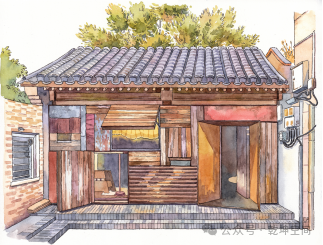
微胡同
Micro Hutong, No.53 Yangmeizhu Xiejie
同样在当年的设计周火了一把的是隔壁的53号院,这是标准营造事务所设计的“微胡同”,其设计理念是“探索在传统胡同局限的空间中,创造可供多人居住的超小型社会住宅的可能性”。然而,微胡同完工后并未如建筑师所期望的那样成为居住空间。时常紧闭的大门和不断更换的运营方使其成为这条街上最神秘的建筑之一。建筑立面由回收的旧木板和钢板拼接而成,设计师认为旧材料所呈现的丰富颜色和肌理是一种艺术表达,但对于普通居民来说,可能更像是未完成的工地。我很幸运遇到了大门敞开的时刻,趁机在它再次沉寂前记录下这一瞬间。
In the same year of the Design Week, the adjacent building, No. 53 Yangmeizhu Xiejie, also gained popularity. It is the "Micro Hutong" designed by Standard Architecture, with the concept of "exploring the possibility of creating ultra-small social housing for multiple people within the constraints of traditional Hutong space." However, after completion, the Micro Hutong did not become a residential space as the architects had hoped. The often tightly closed gate and the frequent changes in management have made it one of the most mysterious buildings on this street. The facade of the building is made of recycled old wooden boards and steel plates. The architect believes that the rich colors and textures presented by the old materials are a form of artistic expression. However, for ordinary residents, it may resemble an unfinished construction site. I was fortunate to encounter a moment when the gate was wide open and seized the opportunity to capture this moment before it fell into silence again.

京都济安斋王回回狗皮膏药店
Beijing Ji’anzhai Wang Huihui Sticking Plaster Pharmacy, No.68-70 Yangmeizhu Xiejie
微胡同对面不远处,有一处壮观的“绿墙”,在这面密密麻麻的爬山虎织成的“墙”后隐藏着北京老字号济安斋的旧址入口。济安堂的前身是京都济安斋王回回狗皮膏药店,始建于明万历年间。几百年来,历代后人以同修仁德、乐善好施、济世养生为己任,恪守独家秘方,所制膏药疗效显著,享誉海内外。如今的济安堂集书店、咖啡店于一身,是斜街上一个温馨的歇脚点。门口的台阶上铺着花砖,而“绿墙”的角落则摆放着一个醒目的红色邮筒,吸引了很多人前来拍照。吧台一角挂着的《吾善制药》和门口上方的老幌子都在提醒着这个地方曾经的历史。店主似乎特别喜欢植物,二楼的露台也布满了盆栽和爬藤,站在那里也许能欣赏到别样的美景。
Not far from the Micro Hutong, there is a spectacular "green wall." Behind this dense ivy curtain hides the entrance to the former site of Beijing's time-honored brand, Ji’anzhai. Previously known as Beijing Ji’anzhai Wang Huihui Sticking Plaster Pharmacy, it was established during the Ming Dynasty, Wanli era. For centuries, successive generations treated share and charity as their responsibility. Their products were famous in the world due to their unique formula, high-quality material and significant effect. Today, Ji’antang has transformed into a combination of a bookstore and a café, serving as a warm and welcoming resting place on Yangmeizhu Xiejie. The steps at the entrance are paved with floral tiles, and in the corner of the "green wall," there is a prominent red mailbox that attracts many people to take photos. The counter displays "My Skill in Pharmacy," and the old sign above the entrance reminds visitors of the place's historical significance. The owner seems to have a special fondness for plants, and the second-floor terrace is adorned with potted plants and vines, offering a unique and picturesque view.

杨梅竹斜街103号
No.103 Yangmeizhu Xiejie
继续往东走,就快到斜街的尽头时能看到一座瘦高的二层小楼。这里曾经是复泰参茸庄,售卖人参、鹿茸等药品。后来成为一座茶楼,门口摆放着写着“茶聊记”的木牌,“饮福铭恩”的牌匾高悬在二楼,但不知道出于什么原因,已经不再经营。茶楼左侧靠着一栋单坡屋顶的白房子,门前摆放的拴马桩是为了防止外来的汽车停放。目前这里可能已经变成了私人住宅,我们便不再去打扰它。
Continuing eastward, when you're close to the end of Yangmeizhu Xiejie, you can see a tall and slender two-story building. This place used to be Futai Ginseng and Antler Pharmacy, selling medicinal products like ginseng and deer antlers. Later, it transformed into a teahouse with a wooden sign placed at the entrance. The plaque with "Drinking Blessings and Remembering Kindness" hangs high on the second floor, though it's no longer in operation for reasons unknown. On the left side of the teahouse leans a white house with a single-sloped roof, and the horse hitching post in front is there to prevent outside cars from parking. Currently, this place may have turned into a private residence, so we won't disturb it any further.
店铺信息:
地址:北京市西城区杨梅竹斜街26号乾坤空间
邮编:100051
联系人:贾老师
电话:13167325166
 加入购物车
加入购物车
 友付提供技术支持
友付提供技术支持
www.yoopay.cn
400.1022.500